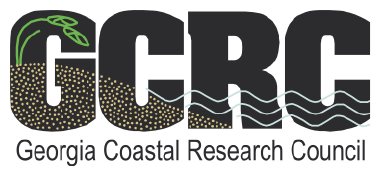MARSH FORWARD: A Regional Plan for the Future of the South Atlantic Coast’s Million-Acre Salt Marsh Ecosystem
The South Atlantic Salt Marsh Initiative (SASMI), a coalition of more than 300 military and government officials, community leaders, conservationists, scientists, fishermen and others have completed a plan to save the future of a million-acre expanse of salt marsh stretching from North Carolina to east-central Florida–nearly the size of Grand Canyon National Park.
The plan calls for protecting coastal grasslands threatened by rising seas, polluted runoff and unsustainable development due to their value in reducing flooding and erosion and provision of wildlife habitat important for recreational and commercial fishing, hunting, birding, eco-tourism and other activities that support coastal businesses and economies. Key strategies, objectives and actions laid out in the plan range from elevating roads to conserving land near marshes so the tidal wetlands can move as sea levels rise. (See the executive summary for the full list.) The voluntary plan calls for close collaboration between SASMI partners, local communities and governments to identify and implement the tactics best suited for each location. And it includes suggestions for securing funding, improving development planning processes and educating and engaging communities in the co-creation of salt marsh conservation projects.
Read the Executive Summary here.
Visit the SASMI homepage here.
Collaboratory For Coastal Adaptation Over Space and Time (C-cOAST)
The Collaboratory for Coastal Adaptation over Space and Time (C-CoAST) is a Research Coordination Network (RCN) funded by the National Science Foundation (NSF) to address grand challenges in coastal resilience. Developed coastal environments are shaped by interactions between human activities and natural processes. Mitigation and recovery strategies that promote adaptation at the time scale of storm events can be counterproductive over longer timescales. A series of collaborative activities will integrate coastal researcher, stakeholder, and practitioner expertise, building capacity for a comprehensive understanding of the human-natural coastal system. This will enable the potential for steering away from future outcomes that communities may want to avoid, and toward outcomes they deem more desirable.
Southeast Conservation Adaptation Strategy
SECAS brings together public and private organizations around a bold vision for the future of our region. We’re connecting the lands and waters of the Southeast and Caribbean to support healthy ecosystems, thriving fish and wildlife populations, and vibrant communities. With a data-driven spatial plan and an ambitious regional goal, SECAS helps accelerate conservation action in the places where it will make the biggest impact.
SECAS develops the Southeast Conservation Blueprint, a living, spatial plan that identifies the most important areas for conservation and restoration across the region. It stitches together smaller subregional plans into one unifying map—a spatial action plan for achieving the SECAS vision and goal. Over 225 people from at least 100 organizations have used or are using the Blueprint in their work. Visit the SECAS in Action story map to explore in-depth examples of how the Blueprint is making a difference on the ground.
Governors’ South Atlantic Alliance
The GSAA was a collaboration of North Carolina, South Carolina, Georgia, and Florida in partnership with three federal co-lead agencies, EPA, USGS, and NOAA that focused on shared ocean and coastal challenges and opportunities promoting environmental sustainability, disaster preparedness, and strong economies. The Alliance supported both national and state-level ocean and coastal policy by coordinating federal, state and local entities to ensure the sustainability of the region’s economic, cultural, and natural resources.
The GSAA Action Plan was released in December 2010 and describes the four Priority Issue Areas that were identified by the Governors to be of mutual importance to the sustainability of the region’s resources: Healthy Ecosystems, Working Waterfronts, Clean Coastal and Ocean Waters, and Disaster-Resilient Communities.
The goals, objectives, actions and implementation steps for each of these priorities were further described in the GSAA Implementation Plan released in July 2011. The GSAA Implementation Plan was published July 6, 2011 and the Alliance has been working to implement the Plan through the IATTs and two NOAA-funded Projects: Coastal Hazards Vulnerability Analysis and Regional Information Management System.
Website: http://www.southatlanticalliance.org/
SARRP Research Plan
The South Atlantic Regional Research Project was a regional, multi-agency project to develop a coordinated coastal and ocean research plan for the southeastern United States (from NC to FL). The South Atlantic effort was funded by National Sea Grant-NOAA and was conducted in concert with similar projects in other Sea Grant regions across the U.S. and Insular Pacific. The project’s primary goals are to identify priority coastal and ocean research needs for the region and to foster productive cooperation among regional partners. The SARRP plan was released in April 2010 after a three-year process that involved federal, regional, state and academic partners from throughout the region. The plan identifies 27 research priorities, which were aligned with the four themes that were used by the South Atlantic Governor’s Alliance: Healthy Ecosystems, Working Waterfronts, Clean Coastal and Ocean Waters, and Disaster-Resilient Communities.
The paper, South Atlantic Regional Research Plan: Development and Application of Coastal Regional Priorities, describes the process by which the plan was developed, highlighting the key research priorities identified in the research plan and presenting an update on synergy with other regional initiatives.
Publications
South Atlantic Regional Plan (2007)
PowerPoint Presentation by Merryl Alber and Christine Laporte
South Atlantic Regional Research Project Update (2007)
Merryl Alber and Christine Laporte
Development of a Research Plan for the South Atlantic Region: Progress Report February 26, 2007
